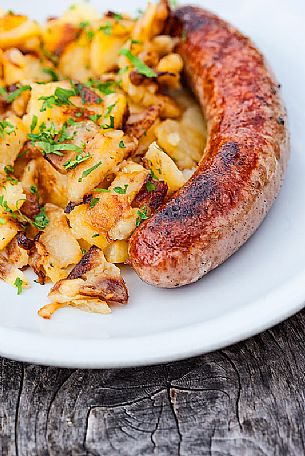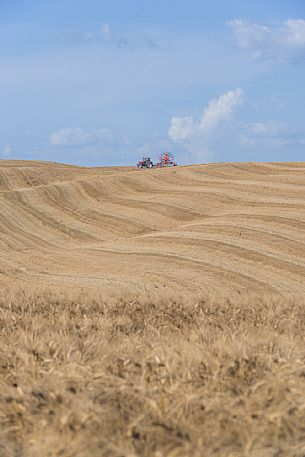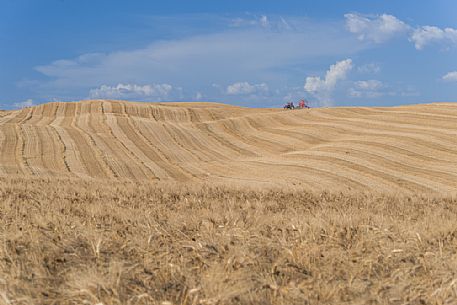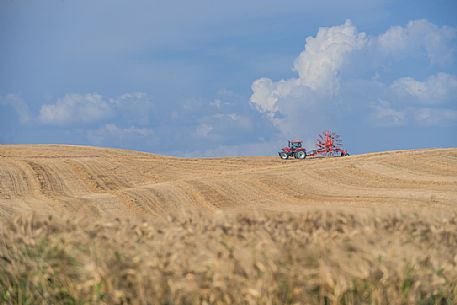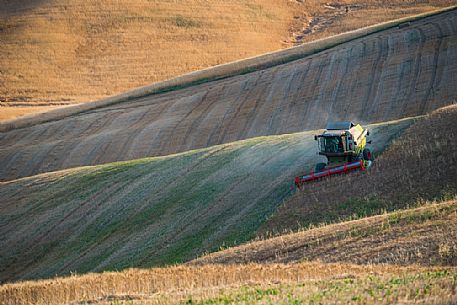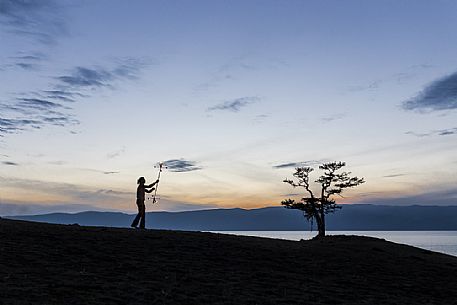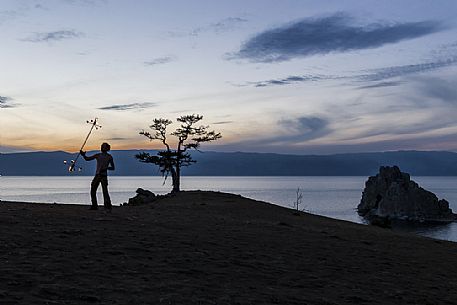Please Sign in or Register now to manage lightbox and cart
Lightboxes - How to use them
A Lightbox is a virtual table where you can collect and view images of interest.
Collect the files you like from any search results page or file close-up page by clicking the 'Add to your Lightbox' icon.
To open and view your selection, click the Lightbox link on the top navigation menu. You can have more than one lightbox if you're working on different projects.
You can email a Lightbox to friends and colleagues for review and discussion before purchase; they will receive an email with a link to the Lightbox that you created.
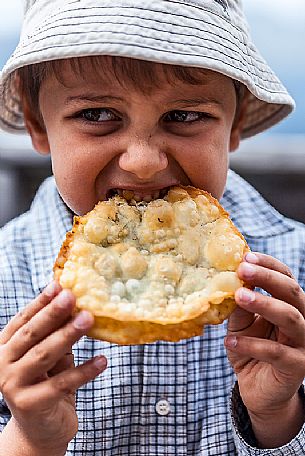
photographer: Luciano Gaudenzio
Hungry child eats Turtres, traditional ladin food, South Tyrol, Dolomites, Italy
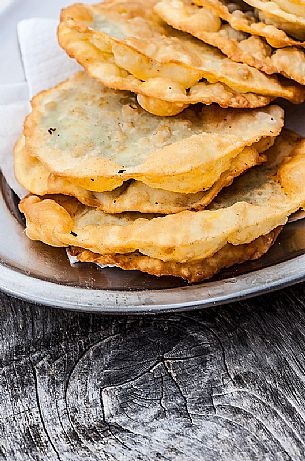
photographer: Luciano Gaudenzio
Turtres (pancakes stuffed with cheese and spinach), traditional ladin food, South Tyrol, Dolomites, Italy
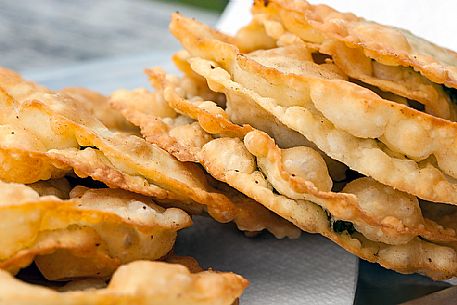
photographer: Luciano Gaudenzio
Turtres (pancakes stuffed with cheese and spinach), traditional ladin food, South Tyrol, Dolomites, Italy
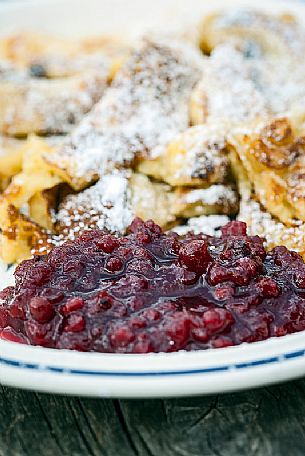
photographer: Luciano Gaudenzio
Kaiserschmarren, typical omelet with cranberries, South Tyrol, Dolomites, Italy
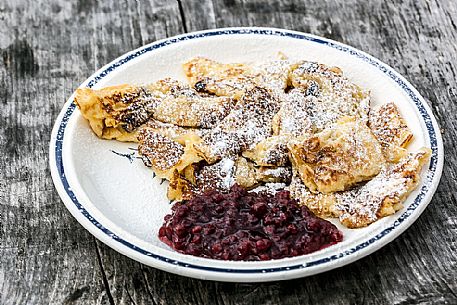
photographer: Luciano Gaudenzio
Kaiserschmarren, typical omelet with cranberries, South Tyrol, Dolomites, Italy
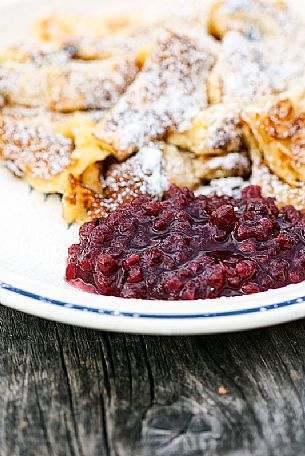
photographer: Luciano Gaudenzio
Kaiserschmarren, typical omelet with cranberries, South Tyrol, Dolomites, Italy
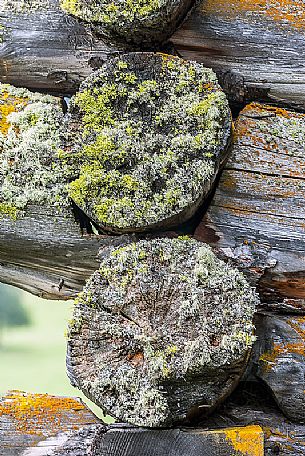
photographer: Luciano Gaudenzio
Closeup of corner of a typical wooden building in a alpine village, Badia Valley, dolomites, Italy
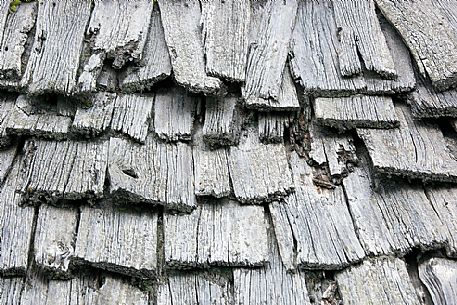
photographer: Luciano Gaudenzio
Traditional house, detail of a shingle roof, Badia Valley, dolomites, Italy
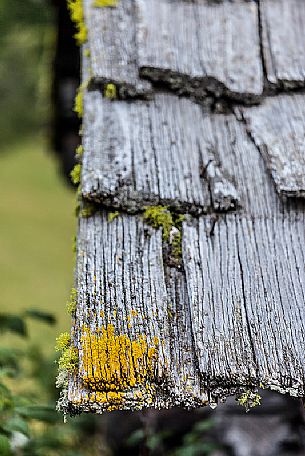
photographer: Luciano Gaudenzio
Traditional house, detail of a shingle roof, Badia Valley, dolomites, Italy
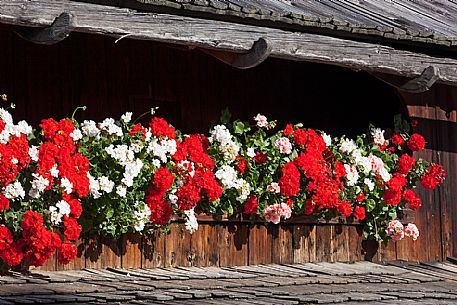
photographer: Luciano Gaudenzio
Typical house with flowers in Val Badia, South Tyrol, dolomites, Italy
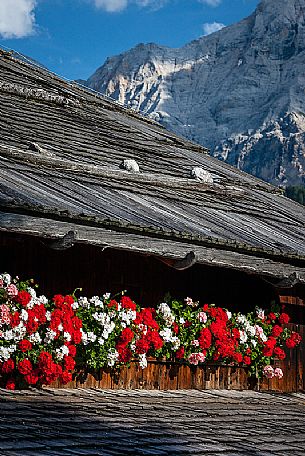
photographer: Luciano Gaudenzio
Typical house with flowers in Val Badia, South Tyrol, dolomites, Italy
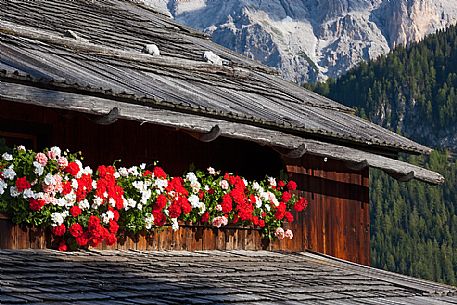
photographer: Luciano Gaudenzio
Typical house with flowers in Val Badia, South Tyrol, dolomites, Italy

photographer: Luciano Gaudenzio
Typical dolomitic wood fence in Badia Valley, South Tyrol, Dolomites, Italy
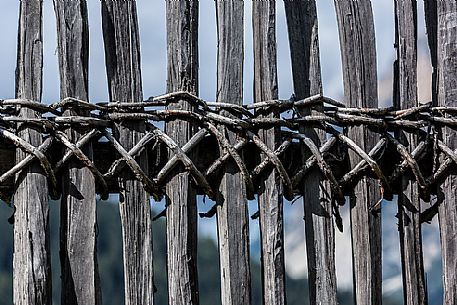
photographer: Luciano Gaudenzio
Typical dolomitic wood fence in Badia Valley, South Tyrol, Dolomites, Italy
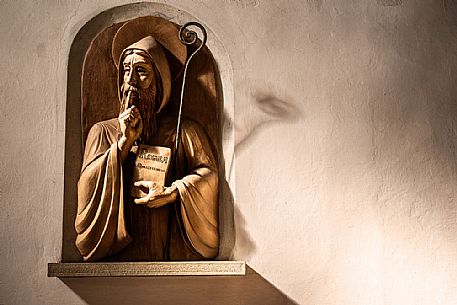
photographer: Stefano Coltelli
Statue in the San Martino church, Agliati, Tuscany, Italy
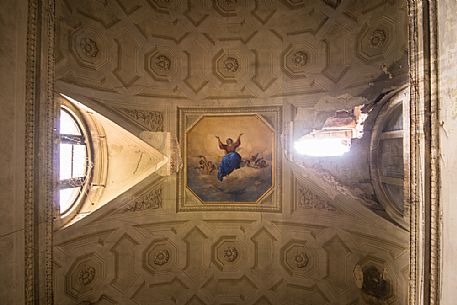
photographer: Stefano Coltelli
Paricoular of Castellonchio abandoned church in San Miniato, Tuscany, Italy
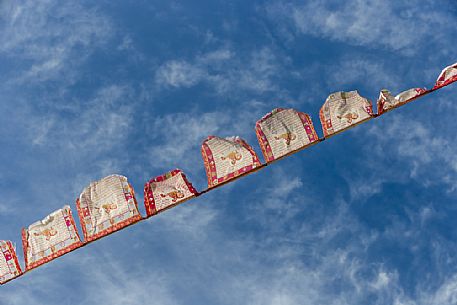
photographer: Martina Vanzo
Some prayer flags inside the Erdene Zuu monastery, Övörkhangaj, Mongolia
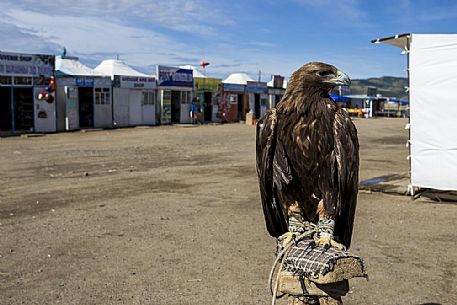
photographer: Martina Vanzo
An Hawk in captivity near the Erdene Zuu monastery, Ôvôrhangaj, Mongolia
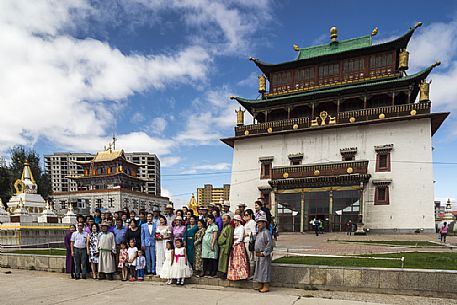
photographer: Martina Vanzo
Some people are taking a group photo during a mongolian wedding in front of the Gandantegchinlen Khiid monastery, Mongolia
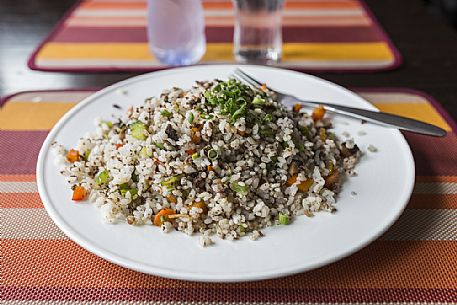
photographer: Martina Vanzo
A typical mongolian meal with rice, vegetables and mutton meat.
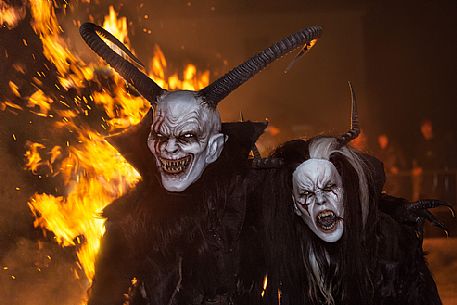
photographer: Anne Maenurm
Bad Santa, meet Krampus: a half-goat, half-demon, horrific beast who literally beats people into being nice and not naughty. Krampus, whose name is derived from the German word krampen, meaning claw, is said to be the son of Hel in Norse mythology. The legendary beast also shares characteristics with other scary, demonic creatures in Greek mythology, including satyrs and fauns, Tarvisio, Italy
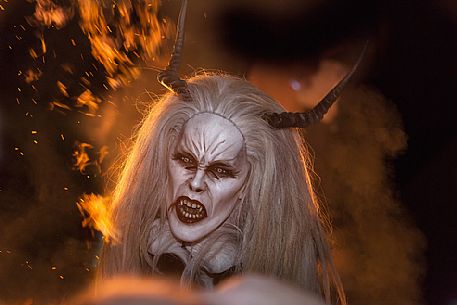
photographer: Anne Maenurm
Bad Santa, meet Krampus: a half-goat, half-demon, horrific beast who literally beats people into being nice and not naughty. Krampus, whose name is derived from the German word krampen, meaning claw, is said to be the son of Hel in Norse mythology. The legendary beast also shares characteristics with other scary, demonic creatures in Greek mythology, including satyrs and fauns, Tarvisio, Italy
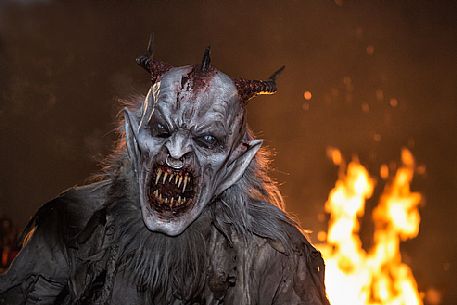
photographer: Anne Maenurm
Bad Santa, meet Krampus: a half-goat, half-demon, horrific beast who literally beats people into being nice and not naughty. Krampus, whose name is derived from the German word krampen, meaning claw, is said to be the son of Hel in Norse mythology. The legendary beast also shares characteristics with other scary, demonic creatures in Greek mythology, including satyrs and fauns, Tarvisio, Italy
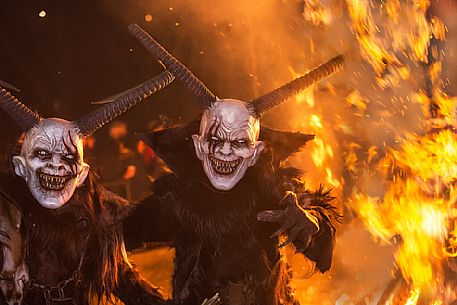
photographer: Anne Maenurm
Bad Santa, meet Krampus: a half-goat, half-demon, horrific beast who literally beats people into being nice and not naughty. Krampus, whose name is derived from the German word krampen, meaning claw, is said to be the son of Hel in Norse mythology. The legendary beast also shares characteristics with other scary, demonic creatures in Greek mythology, including satyrs and fauns, Tarvisio, Italy
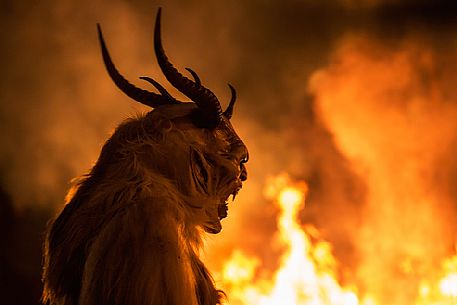
photographer: Anne Maenurm
Bad Santa, meet Krampus: a half-goat, half-demon, horrific beast who literally beats people into being nice and not naughty. Krampus, whose name is derived from the German word krampen, meaning claw, is said to be the son of Hel in Norse mythology. The legendary beast also shares characteristics with other scary, demonic creatures in Greek mythology, including satyrs and fauns, Tarvisio, Italy

photographer: Anne Maenurm
Bad Santa, meet Krampus: a half-goat, half-demon, horrific beast who literally beats people into being nice and not naughty. Krampus, whose name is derived from the German word krampen, meaning claw, is said to be the son of Hel in Norse mythology. The legendary beast also shares characteristics with other scary, demonic creatures in Greek mythology, including satyrs and fauns, Tarvisio, Italy
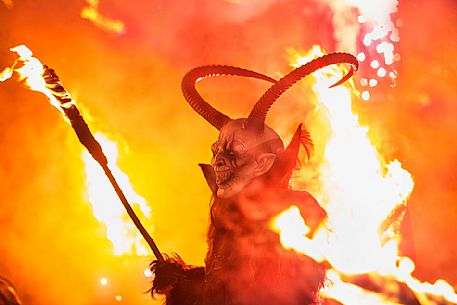
photographer: Anne Maenurm
Bad Santa, meet Krampus: a half-goat, half-demon, horrific beast who literally beats people into being nice and not naughty. Krampus, whose name is derived from the German word krampen, meaning claw, is said to be the son of Hel in Norse mythology. The legendary beast also shares characteristics with other scary, demonic creatures in Greek mythology, including satyrs and fauns, Tarvisio, Italy
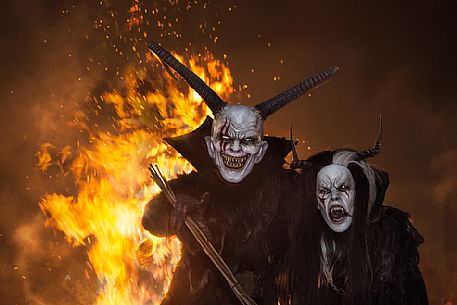
photographer: Anne Maenurm
Bad Santa, meet Krampus: a half-goat, half-demon, horrific beast who literally beats people into being nice and not naughty. Krampus, whose name is derived from the German word krampen, meaning claw, is said to be the son of Hel in Norse mythology. The legendary beast also shares characteristics with other scary, demonic creatures in Greek mythology, including satyrs and fauns, Tarvisio, Italy
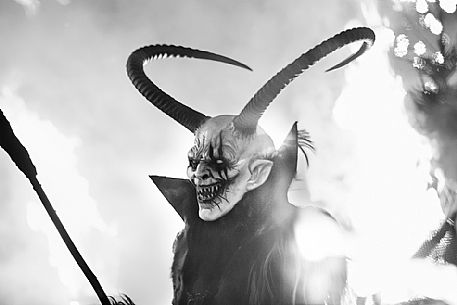
photographer: Anne Maenurm
Bad Santa, meet Krampus: a half-goat, half-demon, horrific beast who literally beats people into being nice and not naughty. Krampus, whose name is derived from the German word krampen, meaning claw, is said to be the son of Hel in Norse mythology. The legendary beast also shares characteristics with other scary, demonic creatures in Greek mythology, including satyrs and fauns, Tarvisio, Italy
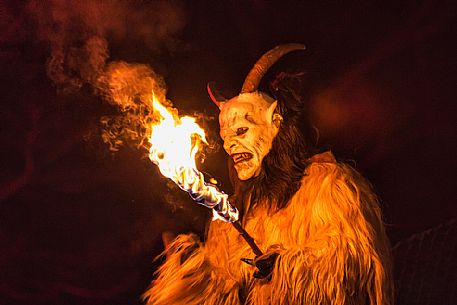
photographer: Anne Maenurm
Bad Santa, meet Krampus: a half-goat, half-demon, horrific beast who literally beats people into being nice and not naughty. Krampus, whose name is derived from the German word krampen, meaning claw, is said to be the son of Hel in Norse mythology. The legendary beast also shares characteristics with other scary, demonic creatures in Greek mythology, including satyrs and fauns, Tarvisio, Italy
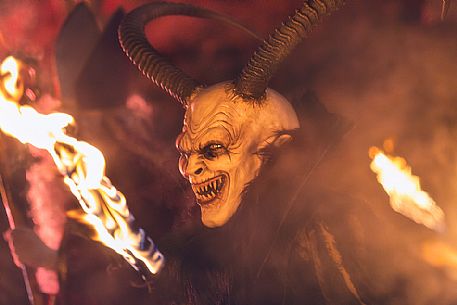
photographer: Anne Maenurm
Bad Santa, meet Krampus: a half-goat, half-demon, horrific beast who literally beats people into being nice and not naughty. Krampus, whose name is derived from the German word krampen, meaning claw, is said to be the son of Hel in Norse mythology. The legendary beast also shares characteristics with other scary, demonic creatures in Greek mythology, including satyrs and fauns, Tarvisio, Italy
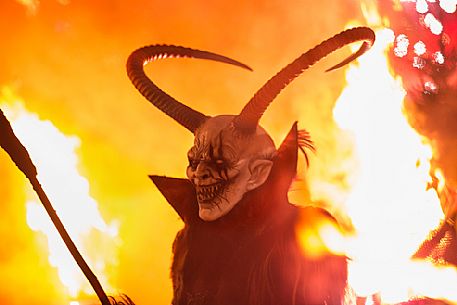
photographer: Anne Maenurm
Bad Santa, meet Krampus: a half-goat, half-demon, horrific beast who literally beats people into being nice and not naughty. Krampus, whose name is derived from the German word krampen, meaning claw, is said to be the son of Hel in Norse mythology. The legendary beast also shares characteristics with other scary, demonic creatures in Greek mythology, including satyrs and fauns,Tarvisio, Italy
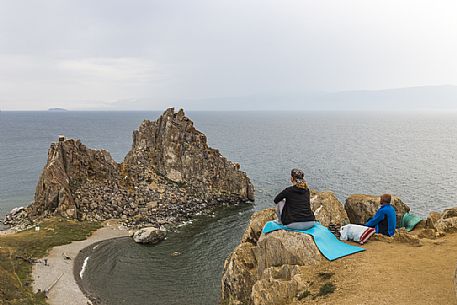
photographer: Martina Vanzo
Some people meditating in front of the Shaman's Rock, the holy rock for shamanism in Olkhon Island.

